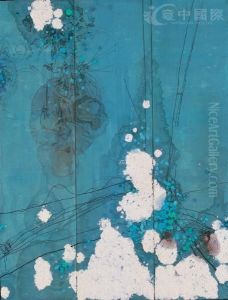Li Gu Paintings
Li Gu, also known as Li Kung, was a prominent Chinese landscape painter of the Song Dynasty, which is often regarded as one of the pinnacle periods for Chinese art. Born in 1081 in what is now the Jiangsu province of China, Li Gu's life coincided with a time of significant cultural flourishing and political change. He is best known for his landscape paintings, which are characterized by their tranquil and harmonious depiction of nature, reflecting the Song Dynasty's emphasis on the natural world and the philosophical principles of Confucianism and Daoism.
Li Gu's landscapes are noted for their meticulous brushwork and subtle use of color. His approach to painting landscapes was shaped by the 'literati' painting tradition, where the emphasis was on personal expression and scholarly knowledge rather than the mere representation of the external world. This tradition was practiced by scholar-officials and literati who were often amateurs in the art world, painting for themselves and their friends rather than for commercial success. However, Li Gu was an exception as he gained recognition for his artistic skills.
Little is known about Li Gu's life, and many details remain obscure due to the passage of time. Historical records that mention him are scarce, but it is believed that he served as a court painter, which provided him with the opportunity to develop and refine his artistic talents. His works were highly appreciated by his contemporaries for their serene beauty and philosophical depth.
Unfortunately, due to the limitations in historical records, many of Li Gu's original works have not survived to the present day or are difficult to attribute definitively to him. However, the influence of artists like Li Gu has persisted, and their styles have been handed down through generations of Chinese painters. The Song Dynasty, in general, has left a lasting legacy on the development of Chinese landscape painting, with artists like Li Gu contributing significantly to its evolution.
Li Gu's death is not precisely recorded, but it is estimated that he died around 1156. Despite the scarcity of surviving original works, his contributions to Chinese art have been recognized by later generations, and he is celebrated as part of the rich tapestry of Chinese cultural history.
